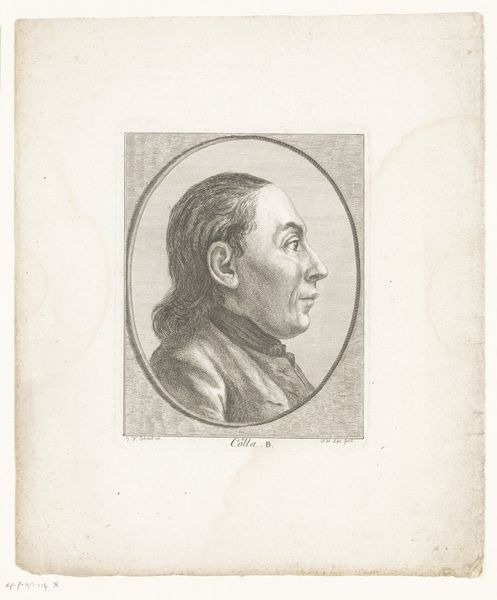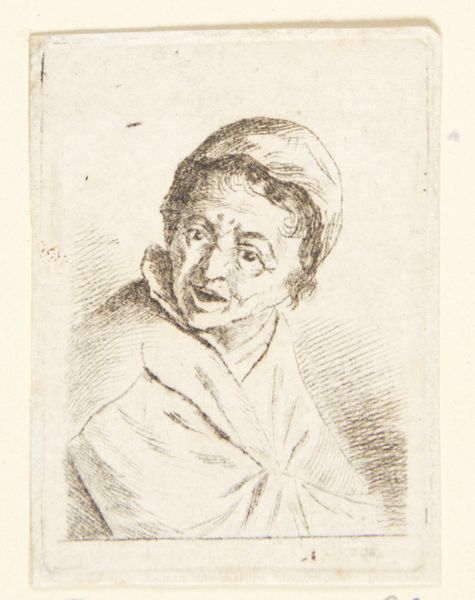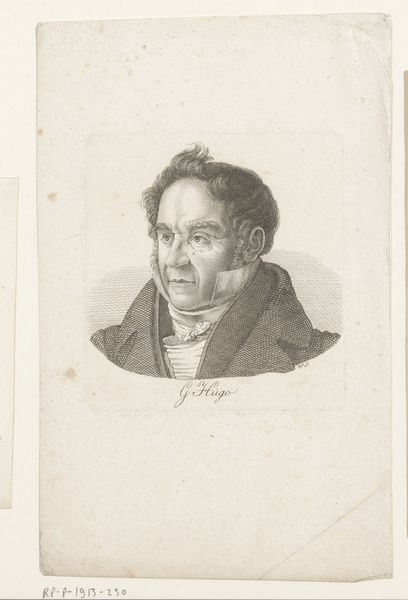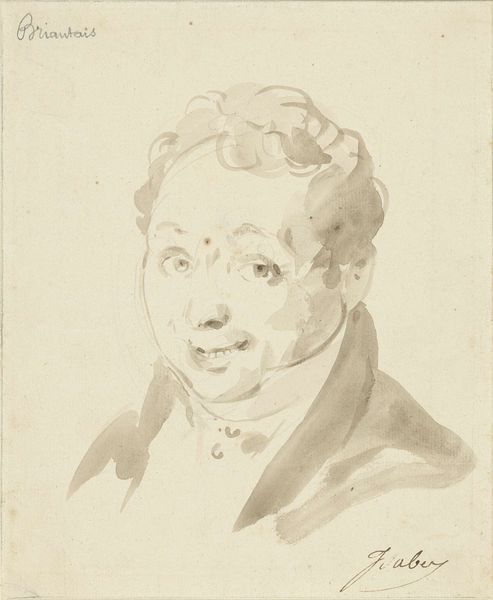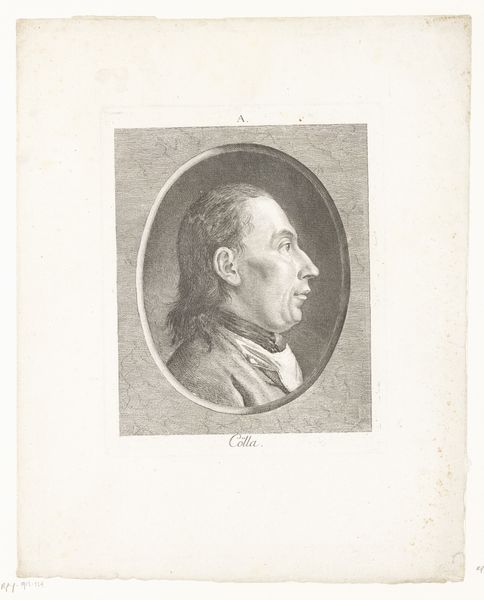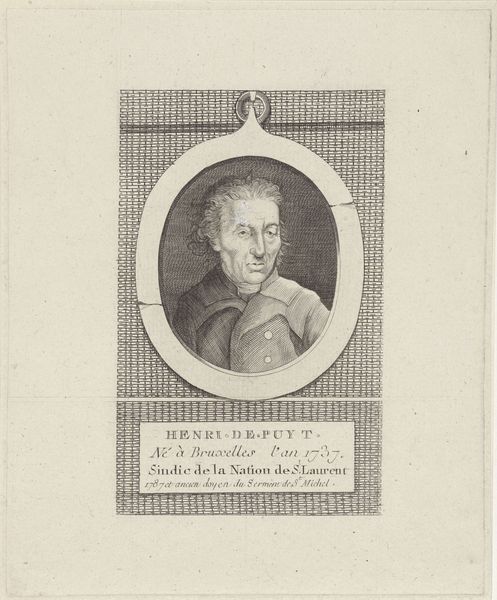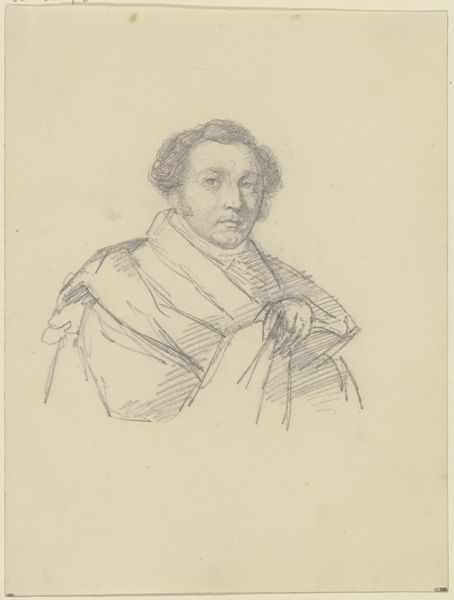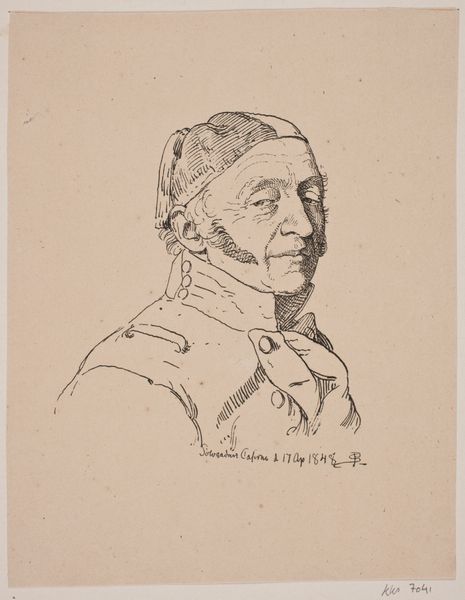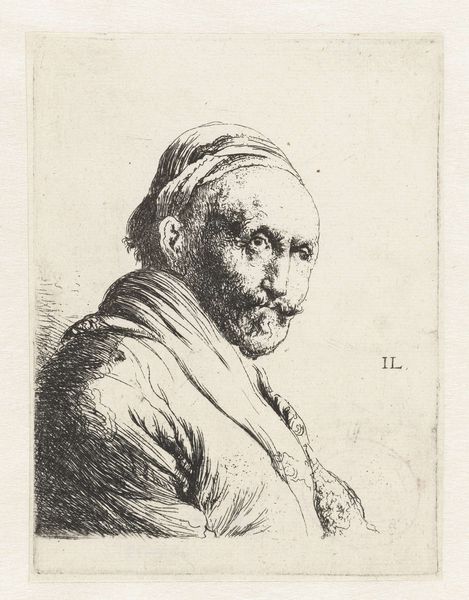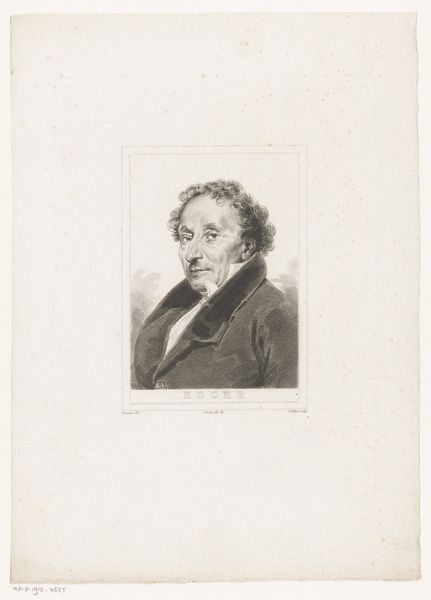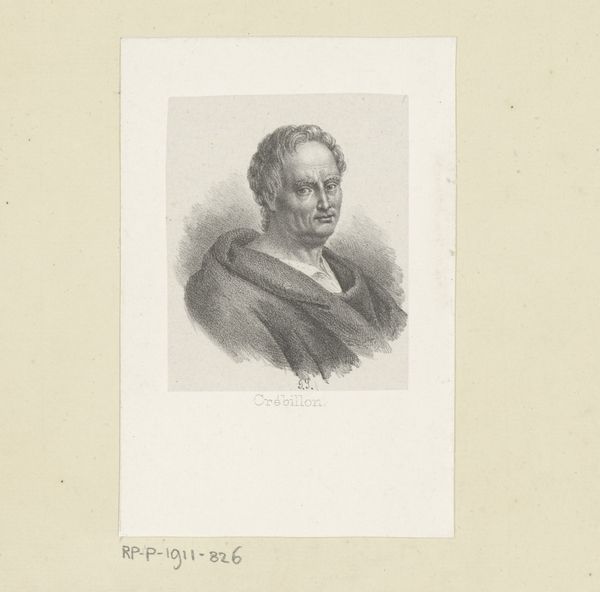
drawing, graphite
#
portrait
#
drawing
#
amateur sketch
#
light pencil work
#
pencil sketch
#
personal sketchbook
#
idea generation sketch
#
sketchwork
#
romanticism
#
pen-ink sketch
#
graphite
#
sketchbook drawing
#
pencil work
#
initial sketch
Dimensions: height 80 mm, width 71 mm
Copyright: Rijks Museum: Open Domain
Curator: What a brooding face! It feels like stepping into someone’s melancholic dream. Editor: Indeed. We're looking at "Man met gesloten ogen," or "Man with Closed Eyes," a graphite drawing from 1828 attributed to Anthonie Willem Hendrik Nolthenius de Man. What immediately strikes me is the sheer amount of cross-hatching employed. Curator: It gives the piece so much texture, doesn't it? Almost like the man's worries are etched onto the page themselves. You can almost feel the artist's hand moving across the paper, deciding whether this is work for the light or for the dark, you know? Editor: Precisely. The pressure applied, the type of graphite, even the paper texture itself contributed to the emotional register of the drawing. These weren't mass-produced sketches, but unique handmade artefacts meant for portfolios, or perhaps pedagogical aids. Note, for example, how the clothing seems to be quickly delineated to allow focus upon the facial construction. Curator: True, it does have the feel of a quickly executed portrait. All these light pencil strokes shaping and shadowing a resting face, I imagine it to be the artists’ relative having a quick nap as they quickly sketch this image out of both artistic exercise, and familial love. Editor: I wonder if the eyes-closed portrait speaks to themes popular at that time, ideas of inwardness and subjective feeling... Curator: I hadn't thought of it that way! It definitely puts a different spin on the reading experience to note this piece's proximity to the romantic period. Still, something in his brow betrays that it would take little to wake the figure, despite the peaceful expression in his brow and face, it makes the entire drawing full of tense dynamism. Editor: That tension speaks to how deeply entangled the artist and subject actually were in the making process; not just personally entangled, but through specific types of tools, artistic skills, material qualities, even. It really helps in understanding Romantic-era ideals. Curator: Well, now I see even more in this quick sketchbook study than I did before. All that weight, made visible! Editor: It’s extraordinary how much we can glean from such a seemingly simple work. A fascinating convergence of the personal and material, wouldn’t you say?
Comments
No comments
Be the first to comment and join the conversation on the ultimate creative platform.
